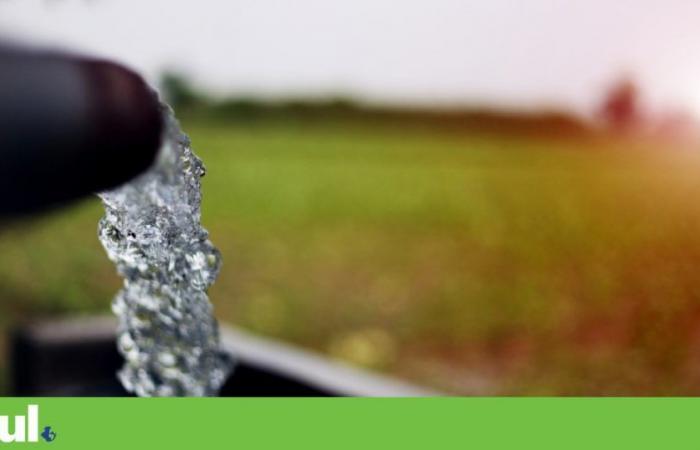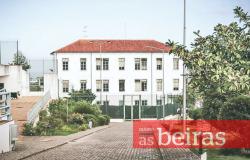The project which envisages the installation of a water catchment system, originating in Alqueva, in the estuarine area of the Guadiana river and close to the village of Mesquita, approximately two kilometers upstream from Pomarão, already has the Study of Environmental impact (EIA) completed and under public discussion until April 29th.
In the information available on the Participa portal (www.participa.pt), the EIA proposes the construction of a water intake tower that will be close to 42 meters high, from which a gravity pipeline will be developed that will transport the water collected from the Guadiana to the Odeleite reservoir, in the municipality of Castro Marim, in the Algarve.
Three alternative routes are proposed in the project for the pipeline that runs through the municipalities of Mértola, Alcoutim and Castro Marim in a length that varies between 29 and 41 kilometers. And the abstraction’s operating regime foresees the pumping of water to the Odeleite dam, for 7 months a year, between October and April, stopping “in exceptionally dry months” or “when, in total, since the beginning of the hydrological year, an annual total of 30 hm3 is reached.”
The water will be collected at a point where the flow of the Guadiana River is no longer influenced by the saline wedge. The volume to be captured for the Odeleite-Beliche system, which serves as the source of water for urban supply to the Algarve multi-municipal system and for irrigation in the Eastern Algarve, will be 2 m3/s for 4 months, and 1 m3/s for another 3 months in the year.
The EIA explains that the volume to be captured corresponds to “at most, half the difference between the flow that circulates in the section of the Guadiana in front of Pomarão and the ecological flow regime established for this section”.
Rui Almeida/GettyImages
Over 1400 hectares of irrigated area in the South
The main transboundary impacts of the project described in the EIA are reflected in the affectation of the ecological status of the water bodies of the Guadiana estuary, the change in water quality in the water bodies of the Odeleite and Beliche reservoirs, the alteration of habitats and biological communities, the barrier effect and fragmentation of habitats and the spread of aquatic invasive alien species in water bodies. “Even so, the main potential negative impacts of the project are minimized and insignificant if the measures provided for in the EIA are applied.”
But in addition to the impacts already highlighted, the president of EDIA José Pedro Salema, has already pointed out to PÚBLICO on more than one occasion the consequences of the transfer from Alqueva to the Odeleite dam. “The blanket is short. Either cover your feet or cover your head. If you go one way, you’re going to miss someone.”
The Regional Water Efficiency Plan (PREH) for the Algarve region and published in 2020, recognizes that climate models have been indicating that the South of Portugal “will tend to become increasingly drier, and it is predictable that situations of stress water supply tends to increase in the Algarve region”.
Furthermore, “in the last 5 hydrological years, and in terms of surface waters, total storage fluctuated between 60% and 80%”. And with the increase in water consumption in recent years, “the rainfall recorded has not been sufficient to generate inflows, in order to reach the full storage level of the existing reservoirs” emphasizes the PREH. Even so, the document makes reference to the installation of new hydro-agricultural facilities and sets out a goal: an additional 1,400 hectares of irrigated area.
The solution recommended by PREH involves the search for new water points: Construction of a reservoir/dam in Ribeira da Foupana to subsequently capture and convey water to the Odeleite dam reservoir (volume between 15 and 20 hm3) and construction of a reservoir in Ribeira de Monchique to capture inflows and supply water to the Odelouca dam reservoir (volume of around 15 hm3).
It is also planned to carry out a study to assess the feasibility of building a dam in Ribeira de Alportel (capacity of around 10 hm3) and also to prepare a preliminary study to capture water in the reservoir of the Sta dam. Clara in Odemira, a project that ensures the irrigation of crops in the Mira Irrigation Perimeter (capacity of around 15 to 20 hm3).
Rui Almeida/GettyImages
In this context, Águas do Algarve SA intends to analyze the solution that involves capturing water in the Mira irrigation canal (Rogil) that would be destined for the Algarve Multimunicipal Water Supply and Sanitation System.
Of the water that leaves the Santa Clara dam, it is estimated that around 20 million cubic meters is lost, due to leaks or evaporation in the distribution channels, or because the water that reaches the end of the line is thrown into the sea, a since there is no return system.
But while these proposals do not materialize, it is from Alqueva that the water will have to come. Pedro Salema insists: If the catchment that will be installed in Pomarão “requires the release of additional flows”, in addition to the volume of flow released to meet the ecological flow in the international section of the river between the old mining port of Pomarão and Vila Real de Santo António, the management of the water stored in Alqueva becomes more difficult. Especially because the Spaniards of Huelva have been demanding, for several years, that Portugal agrees to transfer 75 hm3 to ensure irrigation, tourism and human consumption in the southern region of Alqueva. Spain.
Tags: water Alqueva Algarve environmental impact public discussion Dry
--





